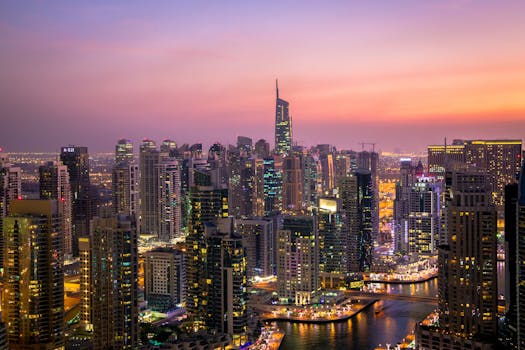
The bench, comprising Chief Justice Khanna and Justice P.V. Sanjay Kumar, deferred the hearing of the petitions to April, noting the requirement for a three-judge bench to adjudicate the matter. The Chief Justice remarked, "We will not take up the Places of Worship Act matter today. It is a three-judge matter. Too many petitions filed. List sometime in March."
The Places of Worship Act, enacted in 1991, aims to preserve the religious character of places of worship as they existed on August 15, 1947. The legislation prohibits the conversion of any place of worship and seeks to maintain their status quo, with an exception made for the Ram Janmabhoomi-Babri Masjid dispute.
In recent years, the Act has faced multiple legal challenges questioning its constitutional validity. Petitioners argue that the law infringes upon the rights to religion and equality by restricting the ability to reclaim religious sites converted in the past. Notably, advocate Ashwini Upadhyay has been at the forefront, filing a public interest litigation challenging specific sections of the Act.
The surge in intervention applications from various groups and individuals seeking to become parties to the case has prompted the Supreme Court's call for restraint. The court's decision to limit these interventions aims to streamline the proceedings and focus on the core constitutional questions raised.
The deferment of the hearing underscores the complexities surrounding the Act and its implications on India's secular fabric. As the nation awaits the Supreme Court's deliberation in April, the outcome holds significant consequences for the interpretation of religious rights and the preservation of historical sites across the country.
The central government, which has yet to file its counter-affidavit, is expected to clarify its stance on the Act's provisions. The forthcoming hearings will be pivotal in determining the balance between upholding secular principles and addressing historical grievances related to places of worship.
Legal experts and scholars continue to debate the Act's relevance in contemporary India, considering the evolving dynamics of religious coexistence and the judiciary's role in mediating such sensitive issues. The Supreme Court's forthcoming judgment is anticipated to provide clarity on these contentious matters, potentially setting a precedent for future disputes involving religious sites.
As the legal discourse progresses, stakeholders from various communities and political spectrums keenly observe the developments, recognizing the profound impact the court's decision may have on India's secular ethos and interfaith relations.
The Supreme Court's emphasis on limiting intervention applications reflects its intent to maintain judicial efficiency while ensuring that the primary constitutional questions are addressed without undue delay. This approach aims to balance the interests of justice with the practicalities of legal proceedings in cases of national significance.
In the interim, the status quo as mandated by the Places of Worship Act remains in effect, preserving the religious character of sites as they stood on the historic date of August 15, 1947. The upcoming sessions promise to be a landmark in the ongoing discourse on religious rights, historical rectification, and the principles of secularism enshrined in the Indian Constitution.
The judiciary's handling of this sensitive issue will be instrumental in shaping the future trajectory of legal interpretations concerning religious places and their historical contexts in India.
As the nation anticipates the Supreme Court's detailed examination in April, the discourse surrounding the Places of Worship Act continues to evoke diverse perspectives, reflecting the complex interplay of law, history, and religion in India's pluralistic society.
The court's forthcoming decisions are poised to contribute significantly to the jurisprudence on the protection of religious heritage and the enforcement of secular principles in a multifaceted cultural landscape.
Observers and participants alike await the judicial outcomes, which are expected to resonate beyond the immediate legal context, influencing broader societal narratives on unity, diversity, and the rule of law.
The Supreme Court's approach to managing the influx of intervention applications serves as a testament to its commitment to upholding judicial decorum while navigating the intricate issues at the intersection of faith and legality.
In the lead-up to the April hearings, the discourse is likely to intensify, with various stakeholders articulating their positions on the Act's provisions and their alignment with constitutional mandates.
The resolution of this legal challenge holds the potential to redefine the contours of religious freedom and historical justice in India, setting a benchmark for future legislative and judicial endeavors in this domain.
As the Supreme Court prepares to engage with these profound questions, the nation stands at a crossroads, contemplating the path that harmonizes respect for historical legacies with the imperatives of a secular, democratic society.
The anticipation surrounding the court's deliberations reflects the collective aspiration for a judicious balance that honors the diverse religious sentiments while steadfastly upholding the constitutional vision of equality and secularism.
In this critical juncture, the judiciary's role as the guardian of constitutional values is underscored, with its forthcoming judgments poised to leave an indelible mark on the nation's legal and cultural tapestry.
The unfolding legal narrative serves as a reminder of the dynamic and evolving nature of jurisprudence in addressing the complex realities of a pluralistic society, striving towards justice and harmony.
As April approaches, the collective gaze turns to the Supreme Court, whose interpretations and decisions will shape the future discourse on the interplay of law, religion, and history in India.
The journey towards resolving the challenges to the Places of Worship Act exemplifies the ongoing endeavor to reconcile past narratives with present-day constitutional commitments, reflecting the resilience and adaptability of India's democratic institutions.
